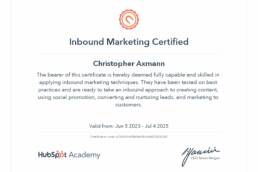Treating Data like Evidence
Much like in a complex investigation, one of the most significant challenges that marketing teams face in data analysis is dealing with siloed data. It’s as if crucial witnesses to a crime were scattered across different locations, each holding a piece of the puzzle but unable to communicate with each other or the detective. In the digital realm, ‘clues’ come in the form of raw data collected from different sources, and each channel is a part of a larger investigation. Just like the clues a detective might collect from various witnesses or pieces of evidence at a crime scene, these data points contain essential insights that can help solve the business ‘mystery’ at hand – whether that’s identifying market trends, predicting customer behavior, or evaluating advertising performance.
Imagine a detective trying to solve a case without being able to gather all the available evidence or speak to all the witnesses; the outcome would likely be inaccurate or, at worst, entirely wrong. Moreover, data silos can lead to duplication of effort, as different departments might collect and analyze the same data independently. Just as a detective wouldn’t want multiple investigators unknowingly pursuing the same leads, businesses should aim for a unified, efficient approach to data collection and analysis.
Marketing technology (martech) tools have proliferated in a similar manner, with organizations having more than 30 tools in their martech stack. However, in the case of digital product analytics (or martech) tools, more is not better. In a separate survey, the proliferation of tools used for customer experience was one of the top 3 challenges for all organizations engaged in transforming and improving customer experience and was also top 3 for organizations in the most mature segment (source: Future of Customers and Consumers Survey, IDC, September 2021). Using a variety of tools, each designed for one or more types of digital customer experience data, is a challenge because each comes with its own unique interface and data requirements.
“How Data Maturity and Product Analytics Improve Digital Experiences and Business Outcomes” – Heap, 2023
One of the problems with investments into data strategy is that stakeholders don’t always appreciate the necessity of data clarity. Even when there are clearly defined parameters for achieving success, organizational adoption requires thematic communication to stakeholders or things can get complicated. Working with data, you have to build a rock solid case for all stakeholders, and then explain the case to the jury so that the functional benefits of data aggregation are ‘beyond a reasonable doubt.’
That’s why I created SCOOB – a memorable framework for encouraging a culture of data maturity at existing marketing organizations.
Storytelling.Compliance.Observation.Optimization.Business Intelligence.S.C.O.O.B.
Storytelling
Whether it’s internal teams or external clients, storytelling has the power to captivate and engage stakeholders on a deeper level. In a data-rich environment, decision-makers often face information overload. A well-crafted story, backed by data analysis, helps cut through the noise and enables stakeholders to quickly comprehend the need to uncover complex insights. By presenting data in a narrative format, decision-makers can grasp the implications and potential outcomes more intuitively, leading to confident and well-informed strategic choices.
Raw data alone lacks the power to inspire action and make informed decisions. It is the art of storytelling that transforms these numbers, graphs, and spreadsheets into a compelling narrative that drives meaningful outcomes.
Compliance
Compliance acts as a springboard for innovation and continuous improvement. Standards establish common frameworks, definitions, and methodologies for data collection, measurement, and analysis. By complying with these standards, we ensure that our data is consistent and comparable across various campaigns, channels, and platforms. This consistency enables accurate trend analysis, performance evaluation, and benchmarking, allowing us to make data-driven decisions based on reliable insights.
Compliance with industry standards also facilitates collaboration and integration with external partners, vendors, and agencies. When data analysis practices align with established standards, it becomes easier to share, exchange, and integrate data seamlessly. This collaboration strengthens our ability to leverage external expertise, access specialized tools, and execute cohesive and comprehensive marketing campaigns. This ensures that our data analysis focuses on relevant metrics and aligns with industry benchmarks, enhancing the company’s ability to accurately measure campaign performance, gauge return on investment (ROI), and optimize our marketing strategies for maximum impact.
Industry standards embody best practices and the collective wisdom of industry experts – compliance helps you tap into a vast knowledge base of proven methodologies, techniques, and innovations. This knowledge empowers us to optimize our data analysis processes, adopt industry-leading tools and technologies, and stay at the forefront of digital marketing trends.
Observation
Observation enables us to identify hidden patterns and correlations in data that may not be apparent through traditional analysis alone. By closely observing data trends, user interactions, and engagement metrics, we can uncover valuable insights that lead to more effective targeting, personalized messaging, and optimized customer experiences.
By carefully observing customer behavior and market dynamics, we can formulate hypotheses about the factors that influence user engagement, conversion rates, and overall campaign success. These hypotheses serve as a foundation for designing experiments, conducting data analysis, and extracting actionable insights. These hidden patterns often provide a competitive advantage and inform strategic marketing decisions.
Optimization
Through data aggregation, we can standardize and cleanse data from disparate sources, ensuring improved data quality and consistency. By aligning data formats, resolving discrepancies, and eliminating redundancies, we create a reliable and trustworthy dataset for analysis. This single source of truth lets us identify areas for improvement and better optimize our targeting, messaging, creative content, and channel selection.
Through iterative testing, data analysis, and refinement, we can fine-tune our strategies to achieve optimal results and allocate resources more efficiently. By looking at the whole picture, we can identifying patterns, draw insights, and ultimately gain a deeper understanding of what works and what doesn’t.
Business Intelligence
A holistic approach to data is the catalyst for true business intelligence, providing a comprehensive view across all digital marketing channels, generating valuable insights, and enabling predictive capabilities. By aggregating and analyzing data from all relevant sources, we gain a deeper understanding of emerging marketing opportunities. These insights empower us to make strategic business decisions, capitalize on market trends, and differentiate our business.
Case Closed!
To solve mysteries, organizations must share data across departments and create a more holistic view of their marketing efforts.
The road to breaking down data silos may be challenging, but the rewards – improved decision-making, greater efficiency, and better business outcomes – make it a mystery worth solving. Not only does this lead to more accurate analyses and more efficient business practices, it can provide deeper insights. Like detectives putting together all pieces of evidence to see the full picture of the crime, it’s all about ensuring that your team discovers all the clues and that everyone can access the information they need to solve each new case.














